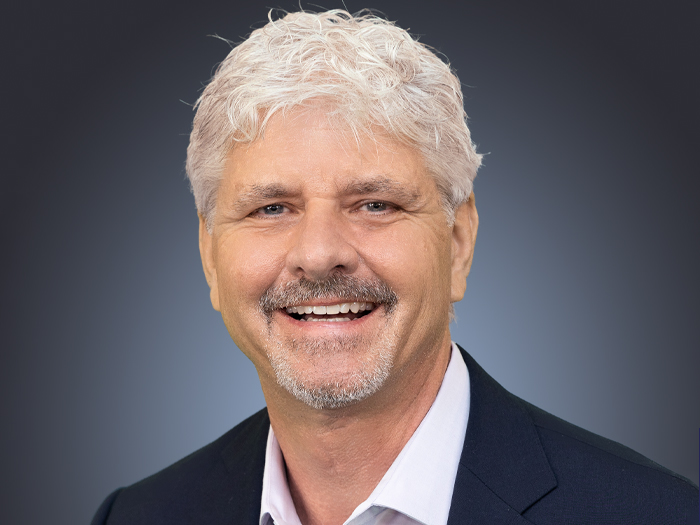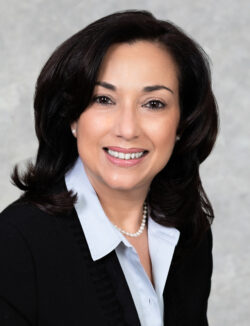2015 Teddy Award Winner
Revamped Program Takes Flight
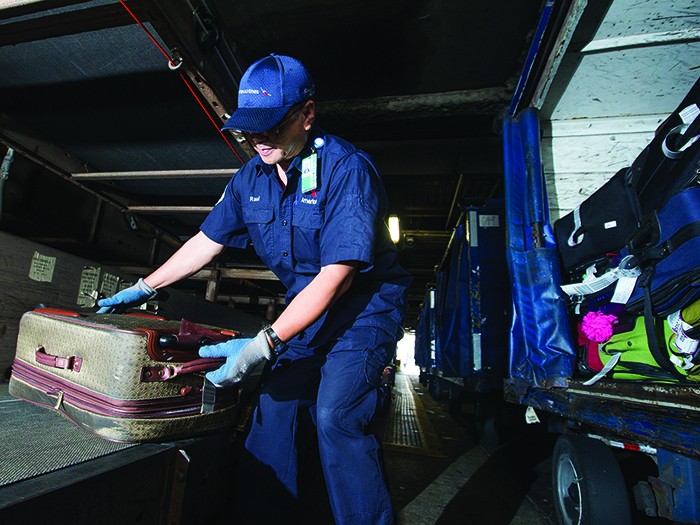
When the merger of American Airlines and U.S. Airways was completed on Dec. 9, 2013, creating the world’s largest airline, the task of integrating 100,000 employees covered by workers’ compensation looked like Mission Impossible.
But newly named director of American Airlines workers’ compensation Jennifer Saddy, who formerly was director of workers’ compensation at U.S. Airways, seized the bull by the horns, and in short order, a complete overhaul of the massive workers’ comp program was on its way.
“We basically started an entirely new workers’ comp program,” said Saddy. “We put together a new workers’ comp team and redefined the roles of that team. We selected almost all new service vendors.
“So from my perspective, we were doing all this and at the same time working with our front-line operations folks to get this accomplished while they were involved in very different aspects of the mergers and integrations,” said Saddy, who also holds the title of director of corporate insurance and risk management.
Known as an enthusiastic, highly focused team leader, one of the first initiatives Saddy undertook was to realign her team’s goals and put a plan in place to resolve the 5,874 American Airlines legacy claims.
Pulling the Team Together
Saddy and her brokers at Willis held weekly calls with the adjusting team to discuss the most costly claims and to ensure the team had a plan to reach a resolution.
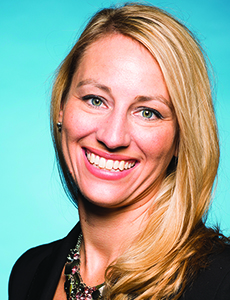
Jennifer Saddy, director of workers’ compensation, director of corporate insurance and risk management, American Airlines
The combined forces achieved a consequential 20 percent reduction in overall open claims, and a 29 percent reduction in aged pending (claims more than two years or older) in under one year.
“We started the closing push at the end of January 2014 and results are through year ending Dec. 31, 2014. In fact, as of Dec. 31, 2014, the combined airline had less open claims than pre-merger American Airlines stand-alone.”
Right from the start, Saddy was determined to move out on as many fronts as possible.
She quickly reached out to the new airline’s four big unions.
“I meet with the unions on a quarterly basis,” said Saddy. “But for the most part, our union contracts don’t have a lot of information about workers’ comp. So some of the most common complaints from the unions have been customer service-oriented and the employees feeling they are not being supported and getting phone calls returned. If the adjuster is not returning a phone call, I need to hear that real-time.”
“We basically started an entirely new workers’ comp program. We put together a new workers’ comp team and redefined the roles of that team.” — Jennifer Saddy, director of workers’ compensation, director of corporate insurance and risk management, American Airlines
As part of her plan to roll out the new workers’ compensation plan as seamlessly as possible, Saddy called a two-day, all-hands-on-deck summit that included her team and all vendors.
“We discussed the merger of the two airlines as well as outlining goals and expectations,” said Saddy.
“However, to make it not only interesting but fun, we did a ‘rock star’ theme. Only rock stars were invited to come as a part of the new program.”
Her rock stars included the 19 members of her workers’ compensation team, newly chosen TPA Sedgwick, Willis, and various other vendors.
“We are now planning for our second annual summit,” Saddy said. “And instead of a rock star theme, in this one we are all superheroes.”
Another aggressive, vital step Saddy took early on was to hire Sedgwick as the combined company’s TPA. An RFP was issued in early April 2014, and Sedgwick was hired on May 23 of that year.
Sedgwick has 79 adjusters working on the American account: 54 adjusters who are entirely assigned to the account, with 25 adjusters that are “designated” (they also handle claims for other accounts).
“The Sedgwick team has worked incredibly hard this past year to make our workers’ comp program a success,” said Saddy. “As we have undergone significant change due to the integration, they have proven themselves to be a flexible partner and embraced our new culture.
“They were quick to adopt the realignment of our workers’ comp goals, while delivering immediate results,” Saddy added.
Changes in Claims Management
Tied into the new agreement with Sedgwick was a revamp of the account instructions an adjuster must follow. Some examples of the changes include:
- The adjuster must receive approval from Saddy’s team prior to assigning defense counsel.
- The adjuster must receive settlement authority from Saddy’s team to engage in settlement discussions with the employee/attorney.
- The adjuster reserve authority limit was reduced.
Another very successful initiative has been the significant expansion of the company’s nurse case management program. Saddy and her team selected three vendors, with more than 30 nurses overall assigned to the program.
“One of the things that I think has been very helpful in moving a claim forward, reducing the duration and getting the employee back to work sooner is that we’ve assigned nurses to basically every claim where the employee is not performing their regular job duty, or where they’re working with some kind of restriction,” said Saddy.
The role of the nurses is to be a medical advocate and communicate with the employee. They also provide return-to-work information to the front-line managers as well as coordinate with the medical team involved.
“The nurses’ goal is to be the liaison between all three of these parties to get information to where it needs to go,” said Saddy.
Saddy also moved the responsibility of communicating with an injured employee from her team to the local supervisor or manager. This provided more personal outreach, Saddy said.
This transition also enabled the corporate workers’ comp team to better manage the overall claims process, including oversight of service partners.
On another new front, at the end of last year, Saddy and her team called a summit meeting of all the attorneys who handle claims for American.
The team presented a litigation performance scorecard that outlined how attorneys’ progress would be managed and how their results would be measured.
Safety and Training
Training is a hallmark of Saddy’s program. Claims adjusters, nurses, doctors and union members who are involved in the workers’ comp program are regularly given training in the airport environment and maintenance facilities, as well as at the same on-site facility where flight attendants train.
“We have the adjusters push and pull a 250-to-300 pound beverage cart,” said Saddy. “We also have them open up the aircraft door on every airplane type we use. We also have them train on the baggage ramps, where many of our serious injuries occur.
“This gives them a better sense of how airline employees work on the job.”
Another innovative injury prevention program that Saddy and her team have been involved with is the expansion of on-site athletic trainers through Fit Matters. American has provided fitness equipment for use by its employees.
The result, Saddy said, has been an 11 percent reduction in soft tissue/musculoskeletal injuries, which represent the majority of the company’s injuries.
These athletic trainers work with employees to develop proper lifting techniques and emphasize the importance of stretching before shifts.
Measurable Improvements
Saddy and her team also established two pharmacy providers, using Helios as its pharmacy benefits manager and Prium to review pharmacy data. Based on a variety of triggers and warning signs, they perform physician-to-physician discussions to ensure appropriate prescriptions.
“By partnering with these two vendors and staying focused on early intervention, we have seen success in reducing the risk to our employees from over-prescribing while reducing pharmacy spending to approximately 7 percent of total medical spending, compared to the industry average, which is approximately 15 percent of medical spending,” Saddy said.
Since Saddy and her team have swung into action, all of the workers’ comp metrics have improved — and all of the reductions are significantly better than industry averages.
Among the most impressive achievements was a 22 percent reduction in collateral requirements from its carrier, based on the airline’s improved financial condition and the new workers’ compensation approach and processes.
“It’s this type of partnership that helps us reduce workplace injuries, and in turn, means a healthier, safer workplace.” — Paul Morell, vice president of safety, security and environment, American Airlines
In addition, total incurred costs decreased by 12 percent, or $80 million, and total outstanding reserves were reduced by 10 percent, or $27 million, in the past year. The current year closing ratio (current year defined as claims that open and close within the same year) increased to 72 percent, compared to the prior year’s closing ratio of 60 percent.
Not only was Saddy’s team able to close more current year claims than in years past, but they also closed them more quickly while reducing costs.
“This illustrates that the employee is receiving more timely information and appropriate care while allowing the employee to recover and not only return to work sooner but to return to their family as well,” Saddy said.
Paul Morell, AA’s vice president of safety, security and environment, said, “Part of being an industry leader in safe and reliable airline operations is making sure our safety programs are reflective of the need and risk of our operations. By working together with our workers’ comp team, we are able to develop programs that address any issues immediately.
“It’s this type of partnership that helps us reduce workplace injuries, and in turn, means a healthier, safer workplace,” he said.
For Saddy, workers’ compensation is about helping an employee during a difficult time.
“Workers’ compensation can be complex, challenging and confusing, but it doesn’t need to be,” she said.
“At the end of the day, it’s about engaging our employees and providing the best medical care available, allowing our employees to return to work as soon as possible and as safely as possible.”
_______________________________________________________
Read more about all of the 2015 Teddy Award winners:
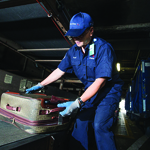 Revamped Program Takes Flight: The American Airlines and U.S. Airways merger meant integrating workers’ compensation programs for a massive workforce. The results are stellar.
Revamped Program Takes Flight: The American Airlines and U.S. Airways merger meant integrating workers’ compensation programs for a massive workforce. The results are stellar.
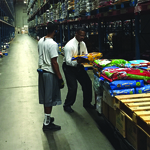 Checking Out Solutions: From celebrating safety success to aggressively rooting out fraud and abuse, Stater Bros. Markets is making workers’ comp risk management gains on multiple fronts.
Checking Out Solutions: From celebrating safety success to aggressively rooting out fraud and abuse, Stater Bros. Markets is making workers’ comp risk management gains on multiple fronts.
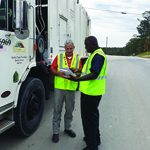 Revitalizing the Program: In three years, the Columbus Consolidated Government was able to substantially reduce workers’ compensation claims costs, revamp return-to-work and enhance safety training.
Revitalizing the Program: In three years, the Columbus Consolidated Government was able to substantially reduce workers’ compensation claims costs, revamp return-to-work and enhance safety training.
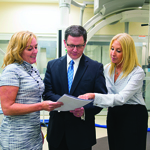 Spreading Success: Barnabas Health wins a Teddy Award for pushing one hospital’s success in workers’ comp systemwide.
Spreading Success: Barnabas Health wins a Teddy Award for pushing one hospital’s success in workers’ comp systemwide.







